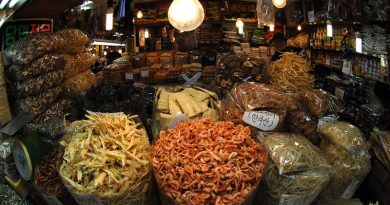The Best Way To See South Africa’s Soweto Township
History Facts
Where: Soweto, south west township of Johannesburg, Gauteng, South Africa
When: A mini-city founded in 1930s
History: Synonymous with the apartheid era when many black’s were relocated there from Jo’burg and it became the HQ of anti-apartheid political groups like Nelson Mandela’s ANC party
Go there for: Music, drinking and fun – Sowetans know how to party – but still expect to see abject poverty
History of Soweto
For the majority of Jo’burg inhabitants, home continues to be black townships surrounding the city, and most likely it’s Soweto, the 21 South Western Townships. Soweto was created in the 1930s and many blacks were relocated there from Jo’burg during the apartheid regime when people were segregated into communities based on their skin color, with the blacks and Muslims at the bottom of the chain with no rights to vote, little state education and bleak prospects. Throughout the 70s and 80s the townships, home of political campaigners like Nelson Mandela’s ANC party, played a crucial role in the struggle against apartheid.
Who are the Sowetans?
The two million Sowetans are streetwise de-tribalised urbanites who have their own style and lingo. Native Sowetans look down at the new rural immigrants, calling them moegoes. ‘Influx control’ theoretically prevents people from coming to Soweto, ‘the city of Gold’, in search of work, and many new arrivals end up in squat camps which have few amenities and are horribly dangerous and unhygienic.
Neighbourhoods
But even within Soweto there is much segregation. Diepkloof, with its four room “matchbox houses”, contrasts with the opulent Diepkloof Extension of the emerging black middle classes. In Orlando you can see the exterior of the modest former home of Nelson Mandela, whereas across the neighbourhood you can see his ex-wife Winnie Mandela‘s flashy pad, along with Archbishop Desmond Tutu‘s house.
Here, the Ubuntu Kraal Park has one of South Africa’s only statues of Mandela and the Hector Pieterson Memorial Museum in this township tells the history of the 1976 Soweto uprising. The Regina Mundi church on the Old Potchefstroom Road holds tales of political residence as it was the base for many anti-apartheid groups. In Freedom Square, Kliptown, the Freedom Charter was signed as the guiding document of Mandela’s ANC party who went on to govern South Africa after the collapse of apartheid.
Township Tour
If you want to visit Soweto you should join a tour, ideally given by locals. There are numerous operators; three hour day tours or four hour night tours are popular. Some specialise in jazz, drinking, visiting artists, local churches, or home-stays with local families. Be prepared to stand out, and see some pretty extreme levels of poverty in the shanty towns and shebeens (drinking joints) where you’re often encouraged to give money or buy local craftwork. Despite the living conditions, the nightlife in Soweto is fantastic with lots of clubs – the most popular with tourists is the restaurant-come-lounge bar Wandie’s Place.
Main image courtesy of MoAfrika Tours




